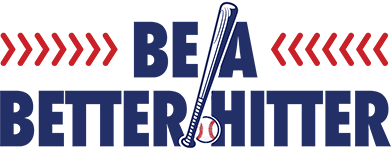The Development of Big League Speed

 Through the years as I have had the opportunity to compare and contrast speed, and speed development training protocols at the Big League Level vs. The Youth Ranks, time and time again it is seen that the professional athlete has an incredible amount of “natural talent/ skills,” but struggle with the ability to adapt to the development of positive speed mechanics. Whereas the developing youth athlete absorbs these mechanics with ease, and begins to see and feel the benefits in a short period of time.
Through the years as I have had the opportunity to compare and contrast speed, and speed development training protocols at the Big League Level vs. The Youth Ranks, time and time again it is seen that the professional athlete has an incredible amount of “natural talent/ skills,” but struggle with the ability to adapt to the development of positive speed mechanics. Whereas the developing youth athlete absorbs these mechanics with ease, and begins to see and feel the benefits in a short period of time.
This is truly amazing to witness because many would think it would be the other way around; youth struggling while the professional athlete takes what they are given and runs with it. Professional athletes are genetically incredible and are able to overcome their lack of proper “mechanics.” So many reading might ask, “Then how are they so good?” Again it goes back to their ability to compensate for this lack of mechanics, forcing them to take advantage of their incredible fast twitch muscle fiber make up, which allows them to generate speed, and move in a way that is superior to their non-professional counterparts in most instances.
So lets analyze the youth; the youth athlete of today is basically a clean slate. Their nervous system doesn’t have as many stored patterns as the professional athlete, making it much easier to create a positive motor pattern, which is exactly what we are trying to create as speed development coaches. I refer to this as, “cleaning up” the athlete. Freeing them from the motor patterns that have been impeding their ability to generate speed, while teaching them new patterns that will allow them to move more economically and efficiently.
After reading the two previous paragraphs, you should have come to the conclusion that it is easier to teach speed development to a youth athlete vs. a professional athlete. If you made that conclusion you would be right, but it is not as cut and dry as one might think. Again, the differences between the pro and youth athlete might include not just physical differences, but mental differences as well. Speed development training takes incredible focus, patience, and most importantly desire to learn. Speed Development Training
(SDT) is highly taxing on the nervous system, and should be done in relatively low training volume, due to the precision demand on the body while learning these new skills and joint angles that produce the increased speed outcome.
Choosing the right coach is probably the most important part of learning the speed development process. Often time’s coaches try spilling all their knowledge to an athlete in one session, focusing on the forest while forgetting each individual tree that makes up the forest. SDT is a progressive approach, where each layer builds on top of the next. It is imperative to take this progressive approach and not move an athlete forward until they have truly mastered the skill being worked on before progressing. If this approach is not taken, then the athlete will constantly be hindered by incomplete development. Great coaches are able to give simple coaching cues that the athlete “gets” and is able to execute with consistency. I can not stress enough the importance for parents and athletes to interview the coach they are looking to learn speed development training from. It’s the same as having a teacher that is brilliant, but has a problem relaying the information to others.
One question I often get is: What can I do to get faster? Many ask this question hoping to get a simple one sentence answer in return. But, if that is what you are looking for in return, you may have the desire to enhance your speed, but simply lack the patience. This is similar to the weight loss scams swarming the US population right now. Everybody wants the quick fix. So referring back to this question, I simply answer by saying, “One joint at a time.” By this I mean focusing on one joint complex at a time
- The ankle/ foot for ground contact
- The knee/hip for flexion and extension of the lower limb
- The core for stabilization
- The shoulder/elbow for arm action
This joint by joint approach will allow the athlete to master the action/ movement required, while at the same time not overloading the nervous system and cognitive ability to process the coaching commands and sometimes demands.
Teaching speed via and article is virtually impossible, so I am shying away from drills and training protocols in this article, and simply using this as an informational measure to create an awareness amongst and active speed desiring audience.
In summary, take and integrated approach to speed training, employing a qualified coach that you vibe/ gel with, and most importantly feel comfortable with. Allow at least 6 weeks for any changes to start taking place at a training frequency of 2-3x / week and most importantly don’t just desire speed, be patient, analytical, and a true student of the techniques your coach is teaching you. Speed Development Training can be very frustrating at times because it feels like you are asking your body to do something that simply cant be done, but give it time and the changes you are desiring will start to evolve.
